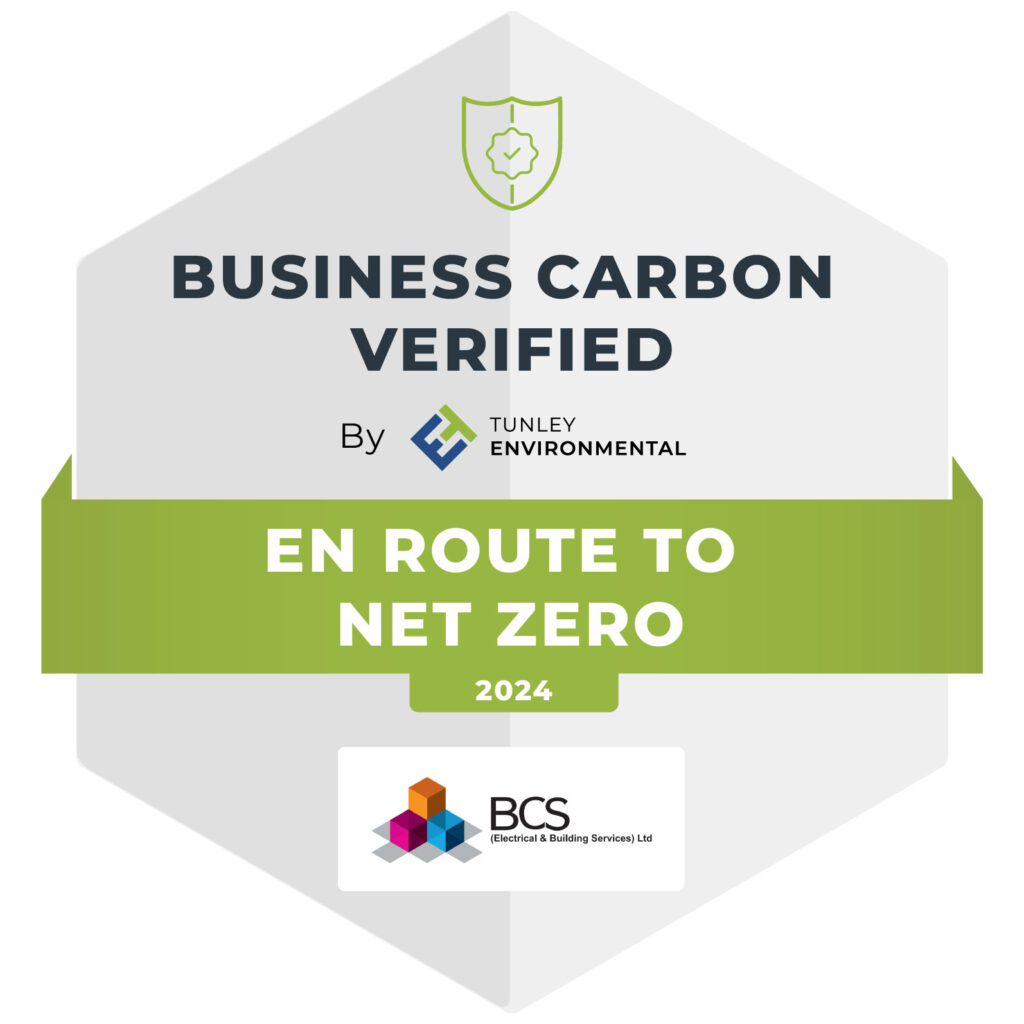Our Journey to Net Zero
Since our founding in 1997, we have always prioritised excellence in all that we do at BCS Electrical and Building Services Ltd. This includes embracing innovation and sustainability as part of our efforts to minimise our environmental impact. That’s why we’re taking meaningful steps toward our commitment to achieving Net Zero Carbon (NZC). As part of our ongoing environmental strategy, we recently partnered with Tunley Environmental, trusted sustainability scientists, to carry out a comprehensive Business Carbon Assessment (BCA) of our operations. The result? A detailed breakdown of our current carbon footprint, a clear understanding of where our emissions come from and an actionable roadmap to significantly reduce them over the coming years.
Why a BCA?
A Business Carbon Assessment (BCA) is a systematic review of the greenhouse gas (GHG) emissions produced by a company through its operations. Emissions are measured in tonnes of carbon dioxide equivalent (tCO₂e) and divided into three scopes:
Scope 1: Direct emissions (e.g. from company vehicles)
Scope 2: Indirect emissions from electricity usage
Scope 3: Other indirect emissions (e.g. employee commuting, supplier transport)
Between 1st February 2023 and 31st January 2024, Tunley Environmental worked with us to collect data from across our business operations. This included everything from fuel use in our vehicles, electricity consumption and staff commuting patterns to supplier freight transport. Their assessment followed internationally recognised standards, including BS EN ISO 14064-1 and the Greenhouse Gas Protocol. This resulted in a precise carbon footprint measurement and a custom strategy to help us reach our Net Zero goals.
Crunching the Numbers
Our total carbon footprint for the year was 32.9 tonnes of CO₂e. Here’s how it breaks down:
Scope 1: 20.1 t CO₂e (61%): Mainly from fuel used in our fleet of vehicles
Scope 2: 2.0 t CO₂e (6%): From electricity used in our offices
Scope 3: 10.8 t CO₂e (33%): From staff commuting, supplier deliveries, and waste
This transparent data has helped us pinpoint our biggest emission sources and focus on where we can make the biggest difference.
Next Steps
Why we’re are pleased to now have tangible and verifiable evidence of our emissions output, we acknowledge that reducing emissions can only be achieved with a clear, science backed strategy. Here’s how we plan to reduce our carbon footprint by 74% by 2037, and achieve full Net Zero with responsible offsetting by 2039:
2025
Switch to Renewable Electricity: We’re planning to transition our electricity supply to a certified 100% renewable tariff, eliminating our Scope 2 emissions and cutting 2.0 t CO₂e from our footprint.
2027–2033
Transition to Electric Vehicles: By gradually replacing our current vehicle fleet with electric vehicles, we aim to cut 20.1 t CO₂e; the largest contributor to our emissions.
2035
Sustainable Supplier Deliveries: We’ll work closely with our supply chain to switch to low-carbon logistics, such as electric or green delivery services.
2037
Promote Greener Commuting: We’ll introduce initiatives like cycle-to-work schemes and car sharing incentives to help reduce emissions from staff travel by 30%.
2039
Responsible Offsetting: Once all feasible reductions are made, we’ll offset any remaining emissions with certified carbon offset providers.
Our efforts to understand where our emissions are coming from will enables us take focused action to reduce them and track our progress over time. It also gives our customers and stakeholders clear insight into our carbon neutrality strategy.
We’re proud to be doing our part for the planet and look forward to sharing our progress with you.

